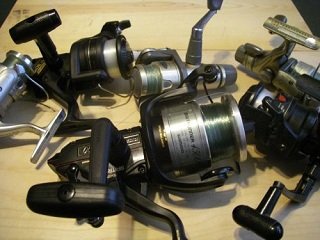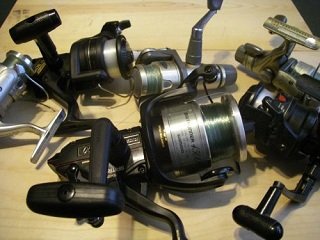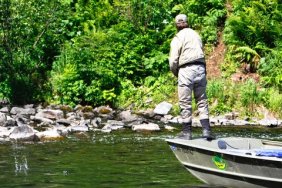 Sad as it may be, the reels that we come to depend on and develop a connection with eventually wear out due to time and use. When that happens, it’s time to head to your nearest outdoors retailer and select a new one. This isn’t as easy as picking out a box of cereal or a pair of socks, however, and choosing a spinning reel that best suits your needs on the water is an involved process that entails numerous factors. No worries, though; I’ve helped many anglers through this ordeal and I’ll let you know how to choose your next reel practically and quickly.
Sad as it may be, the reels that we come to depend on and develop a connection with eventually wear out due to time and use. When that happens, it’s time to head to your nearest outdoors retailer and select a new one. This isn’t as easy as picking out a box of cereal or a pair of socks, however, and choosing a spinning reel that best suits your needs on the water is an involved process that entails numerous factors. No worries, though; I’ve helped many anglers through this ordeal and I’ll let you know how to choose your next reel practically and quickly.
As I’ve said before, the thing to consider, when picking up any piece of tackle, is how often you actually plan to use it. Obviously, you don’t want to spend a lot of something you’ll only use a few times a year, but if you’re an avid fisherman, then dropping a few hundred dollars on a high-quality reel is justified. Generally, the more expensive the reel, the more durable and higher-quality its components will be. Some may glance at the Shimano Stella, and scoff at the price ($700-$950, depending on which model you choose), but the reel itself is one of the best-made, durable reels on the market today, and will hold its own under any situation. Of course, if you only fish at the family cottage once every summer, then a $40 Abu Garcia Cardinal, which is a great reel, will work just fine.
The next factor when choosing a reel is what species of fish you target the majority of the time. For instance, if you don’t fish anywhere near saltwater, you wouldn’t need to spend the extra money on a reel that is corrosion-resistant. Bass fishermen will look more towards the middle-sized reels, (2500-3000), while panfish anglers will lean towards smaller reels to suit their needs. Think long and hard on where you’ll be fishing, as well as what fish you’ll be targeting, and then find a reel with components that best fit such elements.
Ultimately, once you’ve narrowed down your choices, it all comes down to how the reel feels in your hands. Most retailers display their reels on rod handles that rest along a counter and are balanced to reflect the weight of a rod. If you really like a specific reel, though, ask to take it off the handle and see how it feels on an actual rod. This will let you truly experience the balance reel when set up with a rod, especially if the rod you test it with is one that you own or plan on buying.
Yes, buying a reel is an arduous process, but it doesn’t have to be as difficult as many people make it. Try not to get bogged down by the hundreds of options and develop of list of preferred features before even going to the store. Stay focused on how often you fish, what species you target most, and how the reel feels, and you’ll be surprised at just how easy the entire process can be.








